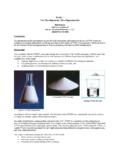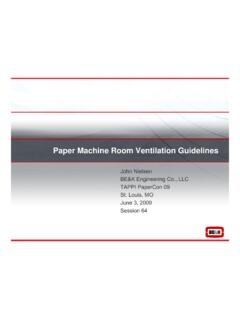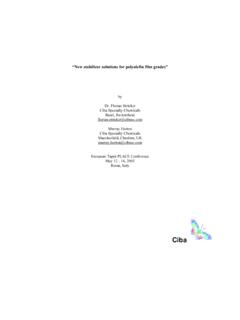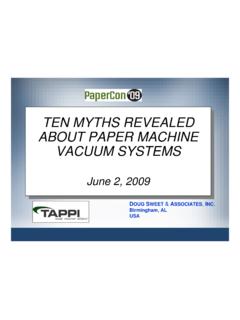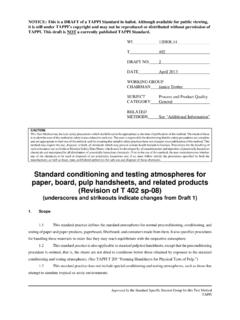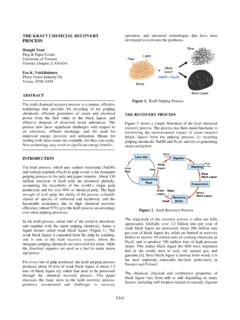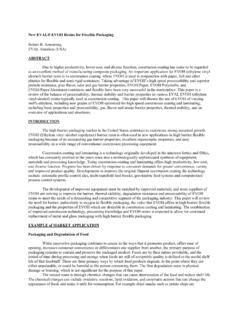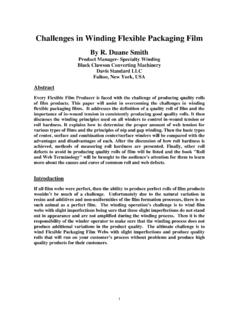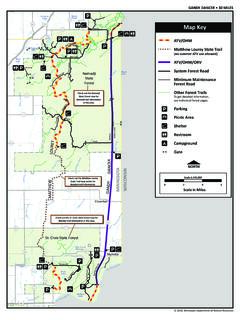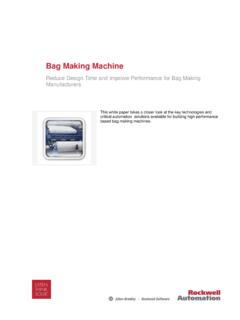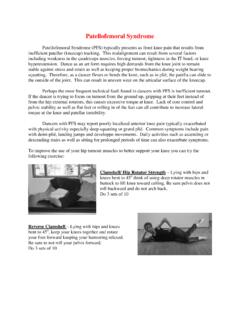Transcription of Understanding Dancer Tension Control Systems - TAPPI
1 Presented by: Darrell WhitesideDirector Sales- Tension ControlMAGPOWRU nderstanding Dancer Tension Control Systems2 Manual Systems Closed loop Open loop Automatic systemsSystem Types3 FeedbackControl adjusts brake torque up or downBSensor measures tensionLCLoad Cell System4 DANCERCONTROLBRAKESENSORPOSITIONT ypical Dancer Control systemDancer Systems5 Why Use Dancers? Accumulation for Out-of-Round Rolls Accumulation for Indexing Applications Accumulation for Zero Speed Splicing6 DFPHow Dancers Work1stCommandment The load on the Dancer sets the Tension !2ndCommandment The load on the Dancer must not change!7+ MA + DV + KXTTLMX2T= LT = Web TensionL = Load Set by Loading Device+ Dancer WeightM = MassA = AccelerationD = Damping FactorV = VelocityK = Spring RateX = DeflectionIdeal Condition: 2T = LHow do we get there?
2 Forces (F) on a Dancer00 08 Loading DancersLOADDFPTC5 CGM 1 - Clutch and cableMagnetic Particle91. Clutch and cableMagnetic Particle2. Pneumatic cylinder and regulatorUse a rolling diaphragm type cylinder Bellafram Illinois Pneumatic Control AirQuick relievingDFPL oading DancersAir In101 - Clutch and cableMagnetic Particle2 - Pneumatic cylinder and regulatorUse a rolling diaphragm type cylinder3 SpringsLoad changes as spring is stretched from rest position4 - Weights(Counter balance)They add mass5 - Shock absorbersLoad changes with velocity of dancerDFPQ uick relievingkgLoading Dancers11 Dancer Arm: Should be long enough Should be positioned far enough away from adjacent idler rolls so the load on the Dancer arm does not change Arcs of 30o-90oare commonLoading Device should be: Independent of position Independent of velocity Independent of direction of motion2TL Effect of Position, Velocity & Directionof Motion on Dancer12 DFPAir Cylinder& Regulator Velocity affects air cylinder & regulator combination Pressure regulator can make or break Dancer system Must have sensitive relieving regulator (grab Dancer arm & pull up quickly)Air ReservoirRecommended: Add an air reservoir between the regulator and cylinder.
3 The reservoir volume must be much larger than the cylinder volumeAir Cylinder Loading ofDancer & Cautions13 Position Sensor Assume 1 of Dancer rotation results in an output/torque change of 5 (lb-ft).. Gain What happens to Tension ?RollFull@lb5(ft) 1ft-lb5 T==)(Gain Affects on Dancer Position14 Gain Affects on Dancer PositionCORER = .25 FOOT1 ROTATIONO Assume 1 of Dancer rotation results in an output/torque change of 5 (lb-ft).. Gain What happens to Tension ?Core@lb20(ft) T==)(15 Summary of GainAffects on Dancer PositionReview Roll Dimensions Full Roll Diameter of 1 (ft) Core Diameter of (ft) Tension Change Due to Roll Diameter Reduction 5 lb @ Full Roll 20 lb @ Core}Roll Build Ratio of 4:1 } Tension Changes by the Roll Build Ratio, but Inertia (Unwind Gain) Changes by R3, or 1:64 Larger Roll Build Ratios are Common!
4 16 Evolution of Gain( system Gain = Control Gain + Unwind Gain) The Past w/o Gain CompensationFull RollCoreDiameterGainSystem Gain w/o CompensationControl Gain w/o CompensationUnwind Gain17 Methods to MinimizeGain Affects Reduce the Roll Build Ratio Impossible!!!! Operate Dancer Control with Low Gain Slow Response (Sluggish) Dancer May Hit Stops Set Gain Proportionate to Roll Size Use a Gain Compensating Dancer Control18 Evolution of Gain( system Gain = Control Gain + Unwind Gain) The Past w/o Gain CompensationFull RollCoreDiameterGainSystem Gain w/o CompensationControl Gain w/o CompensationUnwind Gain Today w/ Gain CompensationDiameterSystem Gain w/ CompensationControl Gain w/ CompensationUnwind Gain19 Summary Use Dancer Systems for Accumulation Out-of-Round Rolls Indexing Zero Speed Splicing Use a Quality Non-Stick Rolling Diaphragm Air Cylinder Make the Arm as Light as possible No Springs, Dampers or Weights For Large Roll Builds use a Gain Compensating Control20 Thank you!
5 Darrell WhitesideDirector of Sales- Tension Control remember to turn in your evaluation
